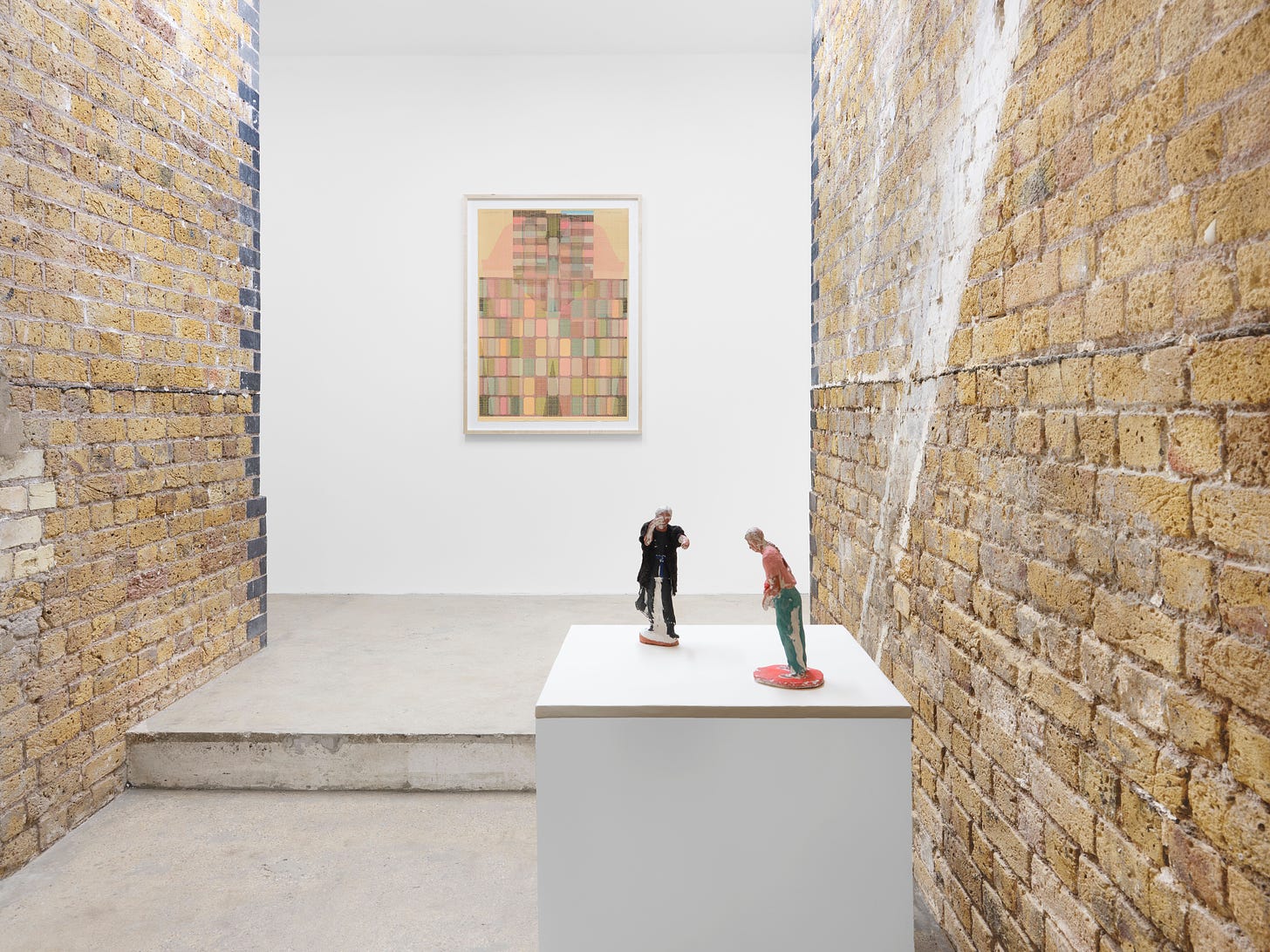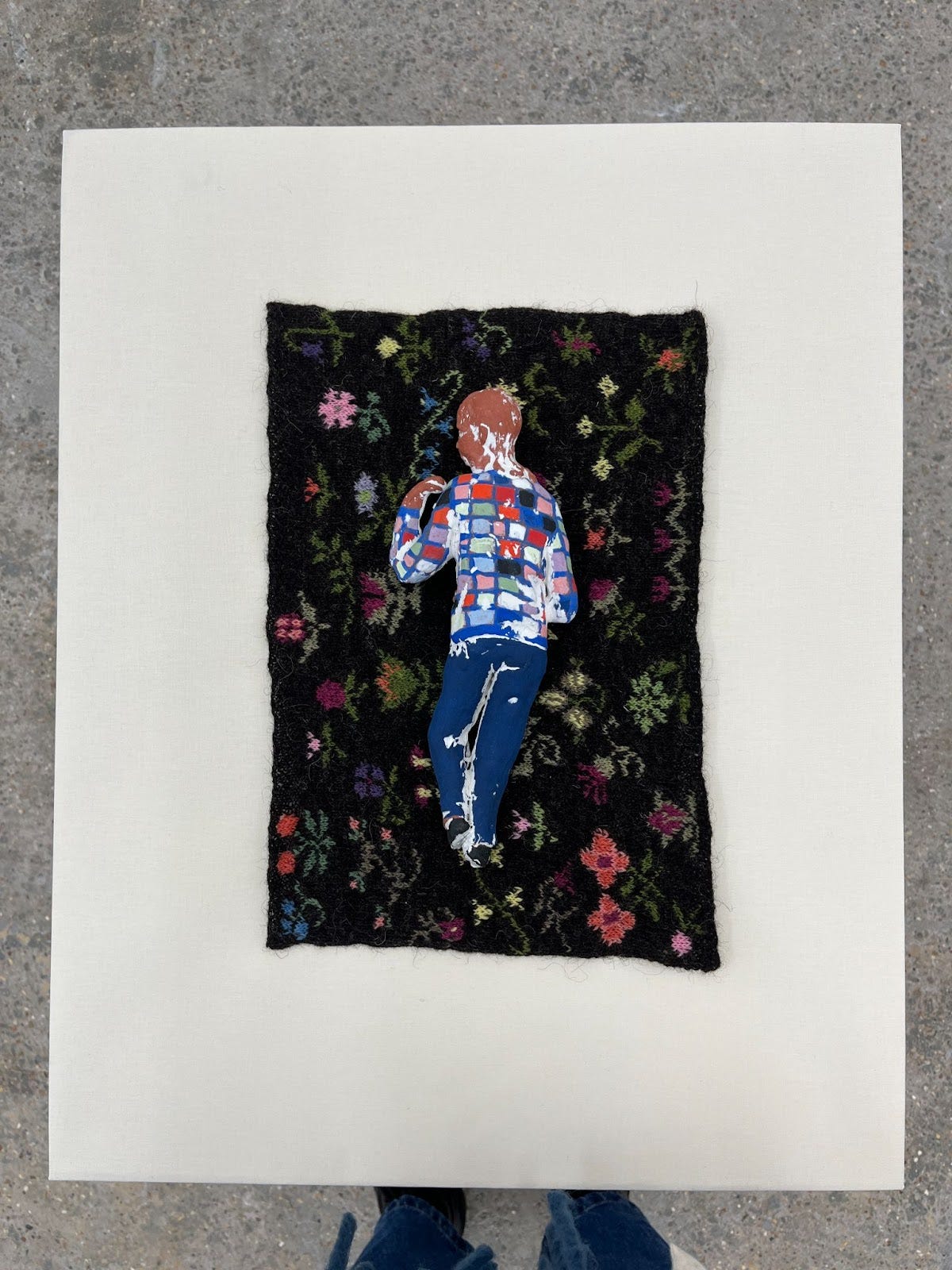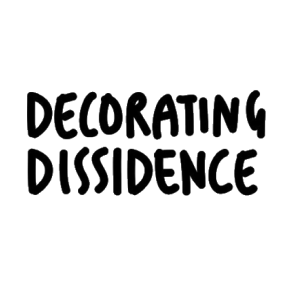Three years after her first solo show at Hollybush Gardens, Ellen Lesperance returns with new work and an expanded look at the legacies of knitting and activism…
Ellen Lesperance (b. 1971, Minneapolis, USA) has been researching and reanimating the material histories of the Greenham Common Women’s Peace Camp for over 12 years. This camp took place at a former Royal Air Force station in Berkshire for over two decades from 1981 — after the Thatcher government allowed for the storage of missiles at the base — with activists deploying a multitude of direct and indirect actions to protest the development of nuclear power in the UK. The camp has been held in the imagination of many feminist networks in the decades since, and studied for its community-led modes of activism. One of these was knitting, archival documentation of which Lesperance’s work seeks to translate into painted compositions. The result is striking, meticulous, gridded works that Lesperance described at an exhibition event as a “gathering space for patterns”.
In 2022, Lesperance began looking beyond Greenham Common to see if the practice of “ideological knitting” could be found across peace camps around the world. She found that Greenham Common had influenced groups of feminists across the world throughout the 1980s, from Italy to Australia. In this exhibition, Lesperance presents an expanded vision of feminist knitting culture, and recreates many of the symbols, shapes and patterns found in knitting practices across these networks of peace camps. Large-scale, gridded gouache paintings are vibrant and confusing in equal measure. One finds themselves trying to decipher and piece together which sections could be the sleeves, which could be the front or the back. In these, Lesperance has also included protest banners and scarves, further complicating the patterns and making for an even more absorbing visual experience.



When asked if she sees these patterns as the work of archiving, documenting or preserving these knitted or patchworked garments, the answer for Lesperance is complex. Whilst seeking to document, these works are not seen as documentary; Lesperance will watch video footage and try to capture stills that include the jumper, but will often only catch half of the jumper, or a blurry image of the pattern. Her patterns are instead proposing a new mode of transmitting craft histories — one that is often anonymous, incomplete, but still figurative and generative for makers. These works ask us how we can interpret and understand a history of knitting with no needles or yarn involved. They present us with an expanded definition of craft, a mode of looking that emphasises the histories and techniques that underpin it, rather than the finished product.
But what is at stake when knitting patterns are displayed as artworks, not drawn from a pattern book, but from the bodies of women? We see a tactic of embodiment, without representing the body. Identity without identifying anyone. Instead, a language of colour, a syntax of pattern and a conversation with the women of our past can tell us everything we need to know.

The paintings are also accompanied by a new body of ceramic works. Dotted throughout on plinths of varying heights are small figurines, adorned, laying and stuffed with knitted blankets or fabric pieces. These ceramics are inspired by terracotta tanagra funerary figurines that depict women in active moments of daily life or as Amazons — female warriors who have become synonymous with strength and resilience across queer and feminist material culture of the late 20th century and early 21st century. Lesperance has used the same ancient vented press mold technique, but reimagines women as in moments inspired by archival photographs of Greenham Common that sees them practising self-defence, carrying water, or resting on a knitted blanket. These small figures, some of which are wearing knitted garments inspired by the patterns on the wall, continue a past moment, recreating a conversational, collective space where a history of activism and a history of craft meet.
This exhibition teaches us about the creative and intellectual worlds that can be opened to us when we pay attention to the work of women’s hands. Proposing ways we can expand our understanding of what craft can mean — beyond the traditional methods of knitting, crochet, quilting, weaving or embroidery — Ellen Lesperance challenges us towards a broader imagination, one spoken in a new language that draws from the work of our ancestors. This No-Man’s Land is worth exploring.

Ellen Lesperance: Stay in the Centre of No-Man’s Land is on at Hollybush Gardens until 27 April 2024.
Laura Moseley is a craft researcher and the founder of Common Threads Press. Currently based in Cambridge, Laura works on projects around visual art, craft and publishing, independently and for arts and cultural organisations.
To find out more about Greenham Common:

